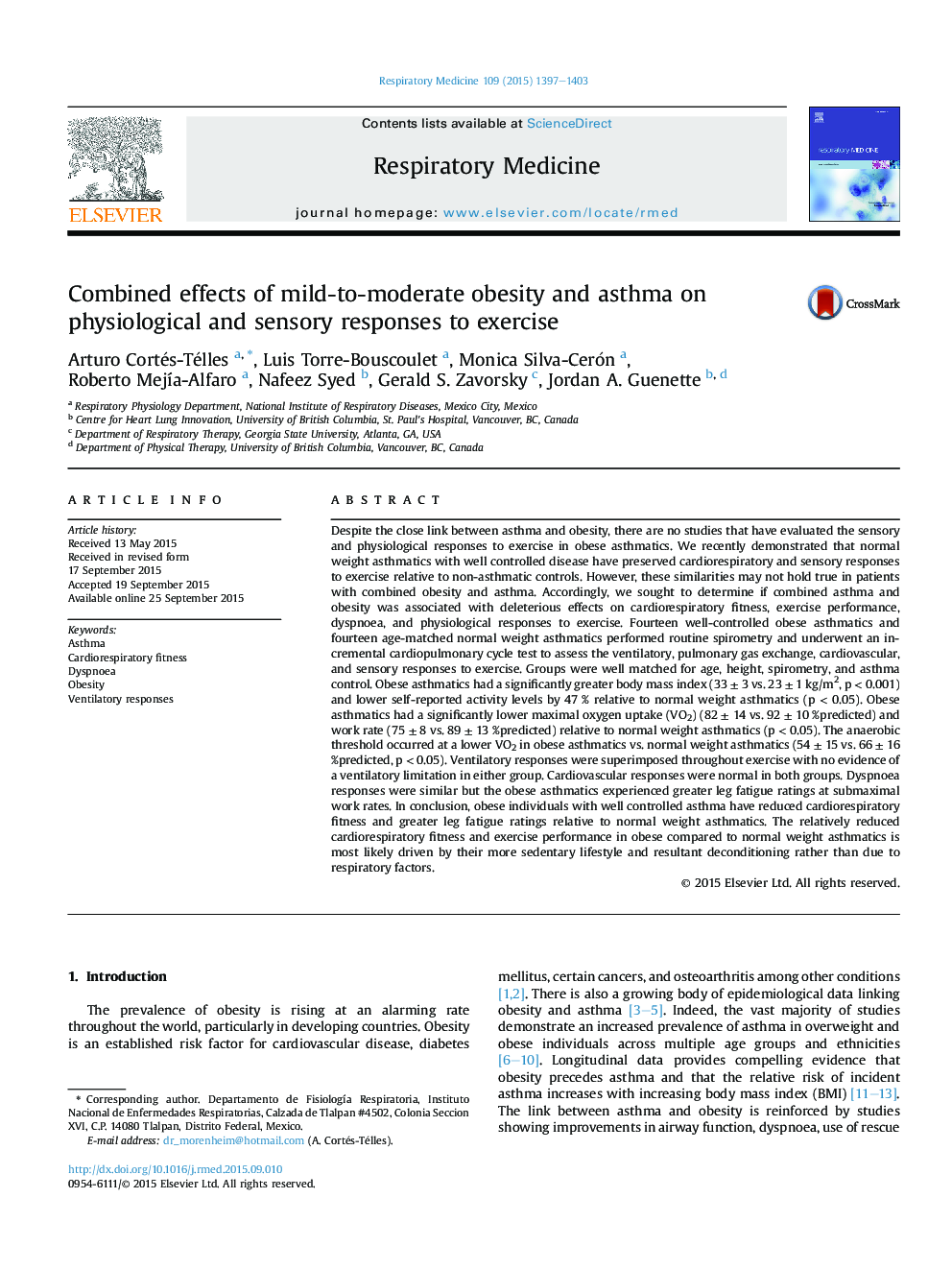| Article ID | Journal | Published Year | Pages | File Type |
|---|---|---|---|---|
| 6241357 | Respiratory Medicine | 2015 | 7 Pages |
Abstract
Despite the close link between asthma and obesity, there are no studies that have evaluated the sensory and physiological responses to exercise in obese asthmatics. We recently demonstrated that normal weight asthmatics with well controlled disease have preserved cardiorespiratory and sensory responses to exercise relative to non-asthmatic controls. However, these similarities may not hold true in patients with combined obesity and asthma. Accordingly, we sought to determine if combined asthma and obesity was associated with deleterious effects on cardiorespiratory fitness, exercise performance, dyspnoea, and physiological responses to exercise. Fourteen well-controlled obese asthmatics and fourteen age-matched normal weight asthmatics performed routine spirometry and underwent an incremental cardiopulmonary cycle test to assess the ventilatory, pulmonary gas exchange, cardiovascular, and sensory responses to exercise. Groups were well matched for age, height, spirometry, and asthma control. Obese asthmatics had a significantly greater body mass index (33 ± 3 vs. 23 ± 1 kg/m2, p < 0.001) and lower self-reported activity levels by 47 % relative to normal weight asthmatics (p < 0.05). Obese asthmatics had a significantly lower maximal oxygen uptake (VO2) (82 ± 14 vs. 92 ± 10 %predicted) and work rate (75 ± 8 vs. 89 ± 13 %predicted) relative to normal weight asthmatics (p < 0.05). The anaerobic threshold occurred at a lower VO2 in obese asthmatics vs. normal weight asthmatics (54 ± 15 vs. 66 ± 16 %predicted, p < 0.05). Ventilatory responses were superimposed throughout exercise with no evidence of a ventilatory limitation in either group. Cardiovascular responses were normal in both groups. Dyspnoea responses were similar but the obese asthmatics experienced greater leg fatigue ratings at submaximal work rates. In conclusion, obese individuals with well controlled asthma have reduced cardiorespiratory fitness and greater leg fatigue ratings relative to normal weight asthmatics. The relatively reduced cardiorespiratory fitness and exercise performance in obese compared to normal weight asthmatics is most likely driven by their more sedentary lifestyle and resultant deconditioning rather than due to respiratory factors.
Related Topics
Health Sciences
Medicine and Dentistry
Pulmonary and Respiratory Medicine
Authors
Arturo Cortés-Télles, Luis Torre-Bouscoulet, Monica Silva-Cerón, Roberto MejÃa-Alfaro, Nafeez Syed, Gerald S. Zavorsky, Jordan A. Guenette,
